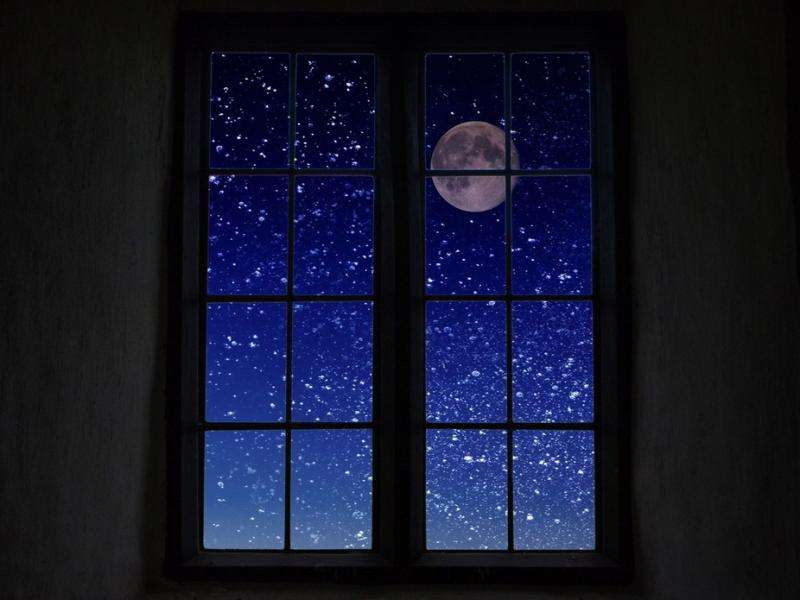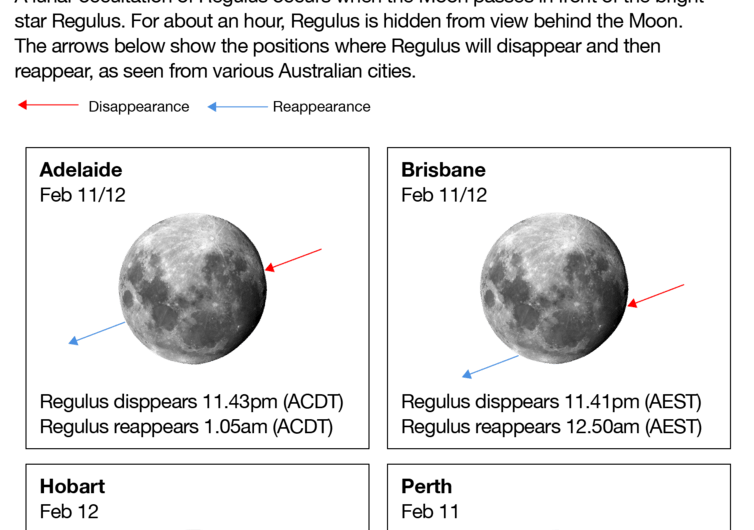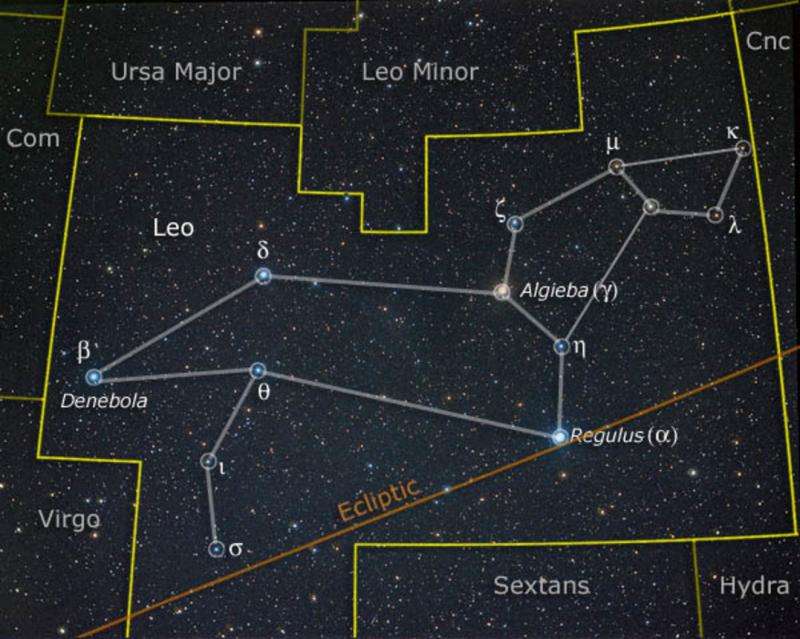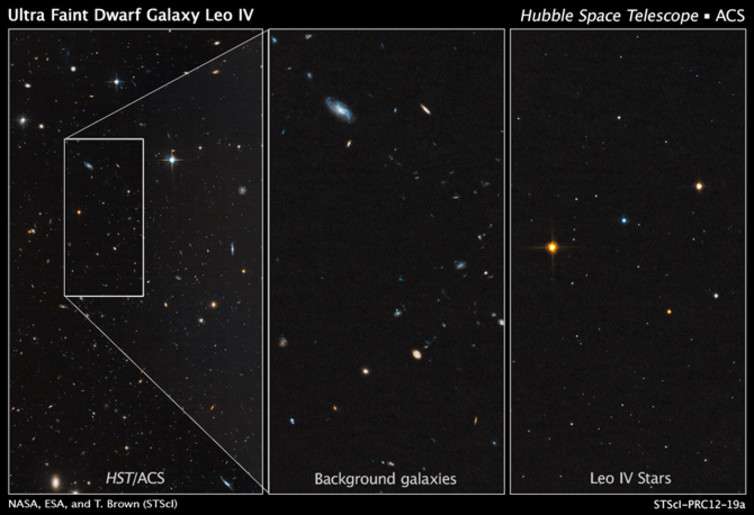Turn your eyes to the Moon this weekend. Credit: Karen Arnold
Across Australia, on the evening of February 11/12, the full moon will travel directly in front of the bright star Regulus. For about an hour, the star will be hidden from view as the moon passes by.
This event is known as a lunar occultation and we have entered a season of lunar occultations of Regulus. They will continue through until April 2018 but each one will only be seen from certain locations on Earth.
This Saturday night, Australia is in the right place to see the occultation. We'll also see another in May and northern Australia will see a final one come September.
Regulus will disappear behind the right side of the moon and emerge from the left. Observing the exact moment when the star disappears and returns again will be tricky considering that the moon is full and therefore shining at its brightest. So it'll be best to look for Regulus a few minutes before and after the given times.
For West Australia, the event occurs about an hour after moonrise, so the moon will be found low towards the eastern horizon. Most other places will see the occultation around local midnight, with the moon high towards the north-east. From Darwin, the moon will only just meet up with Regulus, and you will see a grazing occultation at 10:40pm local time.
Why now?
Every nine years, the moon's path aligns almost perfectly with the ecliptic, which is the apparent path that the Sun follows across the sky. The ecliptic can be traced through the zodiac constellations and Regulus, in the constellation of Leo the lion is the brightest star to sit very close to the ecliptic.
For the next year or so, the moon will travel directly in front of Regulus each month as it makes its way around the sky.
Today, watching the moon play peak-a-boo with Regulus is for the most part a curiosity. It's a great chance to see the clockwork of the universe in action and precise timings of the event can be used to map the moon's surface features.
Regulus is the brightest star to sit near the ecliptic. Credit: Akira Fujii/David Malin Images
However, there was a time when observing the position of the moon relative to bright stars such as Regulus, and also to the Sun, was a critical skill. It was a practise used by navigators as they sailed the oceans and provided them with a way to determine their longitude. Captain James Cook was highly proficient in the technique and used it to navigate his voyages across the southern ocean.
The little king
Being the brightest star in the constellation of Leo, Regulus is named as the 'little king'. The other named stars in this constellation are Denebola 'the lion's tail' and Algieba 'the forehead'.
The constellation resembles a crouching lion, although that's a little hard to see from Australia since the constellation appears upside. From the south, Leo is most easily recognised as an upside-down question mark, formed by the curving line of stars that would otherwise be the mane of the lion.
The faint sprinkling of stars that make up the dwarf galaxy Leo IV are revealed (right-most image) by the Hubble Space Telescope. Credit: NASA, ESA, and T. Brown (STScI)
Leo contains a number of bright galaxies, such as the lovely Leo Triplet that includes two nearby spiral galaxies which can be seen using amateur telescopes. The Hubble Space Telescope has also imaged a 'ghost-like' galaxy in the constellation, known as Leo VI.
It is an old relic from the early times of the universe and about 13 billion years ago, this galaxy abruptly shut down its star formation which stunted its growth. Leo IV is one of more than a dozen ultra-faint dwarf galaxies to have been discovered.
And if you are out looking at the moon and Regulus on Saturday night, be sure to also take a look towards the east where you will find bright Jupiter, the king of the planets.
Provided by The Conversation
This article was originally published on The Conversation. Read the original article.![]()


























